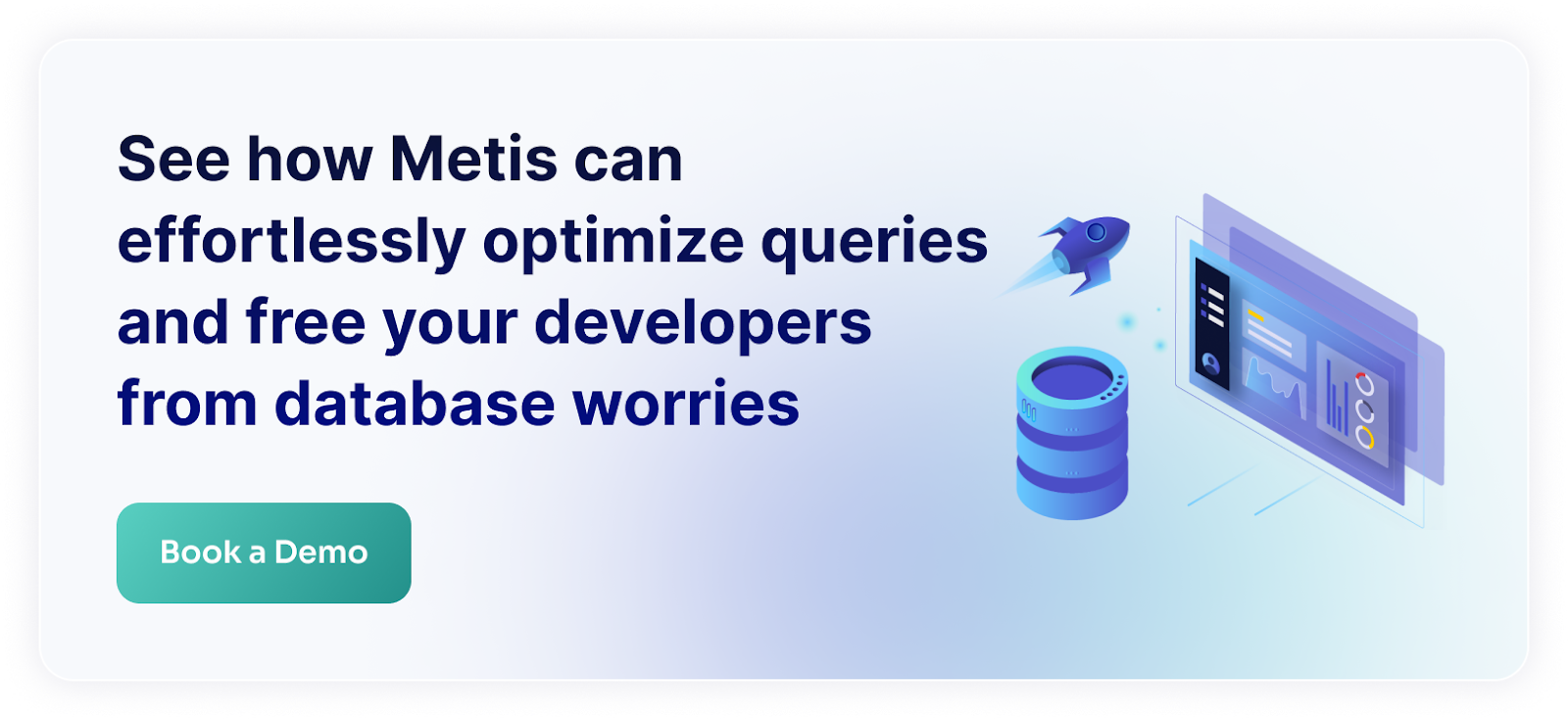No matter how diligent we are, things may break in production. We may deploy faulty code, run a slow schema migration, or simply face an increase in traffic that can bring our systems down.
When things break around databases, developers often feel like they are at a loss.
Developers may lack knowledge of database internals. They may lack permissions, working knowledge, or simply not be aware of what queries are running in the database. No matter how battle-tested their CI/CD pipelines are or how optimized their IDEs are, they don’t control databases. We need to change that.
Let’s see 3 things that can bring us control of our databases.
The First Thing Is Observability
Developers often can’t deal with problems because they simply don’t see what’s going on. Just like they have debuggers and profilers, they need tools that can show them everything that happens in the database and around.
To fix that, they need observability in all parts of SDLC. They need to understand how their SQL queries are executed. They need to be able to access execution plans and details of the database activity. They can’t wait for load tests to complete, but they need to know if their queries are fast enough right when they develop the changes.
We can do that with OpenTelemetry. We can plug into the developer environments and their databases, capture queries, extract execution plans, and analyze them to provide actionable insights. We can tell if the queries are going to work well in production. Next, we can do the same in production to extract execution plans of the live queries.
The Second Thing Is Automation
We can’t do things manually. To move fast and improve the velocity, we need to automate as much as possible. Therefore, we need to build observability around all the systems we have and all databases.
We need to constantly capture execution plans, statistics, configuration changes, schema migrations, and everything that may affect the database performance. We then need to apply automated reasoning to detect anomalies and understand why things get slower.
Once we have all of that, we can build self-healing mechanisms. We can simply let our databases fix issues automatically because we have all the details to explain why they don’t work. We can immediately see which indexes to add, which configurations to change, and how to fix slow queries.
The Third Thing Is Ownership
Last but not least, we need the ownership. We need the developers to change their mindset and admit that they can work with databases. This lets them achieve database reliability and never let their systems go down.
This may seem like putting more work on developers. Fortunately, that’s not the case. By bringing automated observability and actionable insights, they simply exchange one work with another. They can get things automatically fixed and only focus on what’s important. However, they need to embrace the new reality and own their databases end-to-end.
Use Metis and Get Control of Your Databases
Metis gives you all you need to take control of your databases. Metis can analyze your queries and build observability. I can capture execution plans, configurations, schema changes, and everything that affects database performance.
Metis automates your monitoring. It detects anomalies and fixes them automatically. If it can’t fix issues, Metis alerts you that your business decisions are needed. Finally, Metis gives you a way to own your databases end-to-end.







